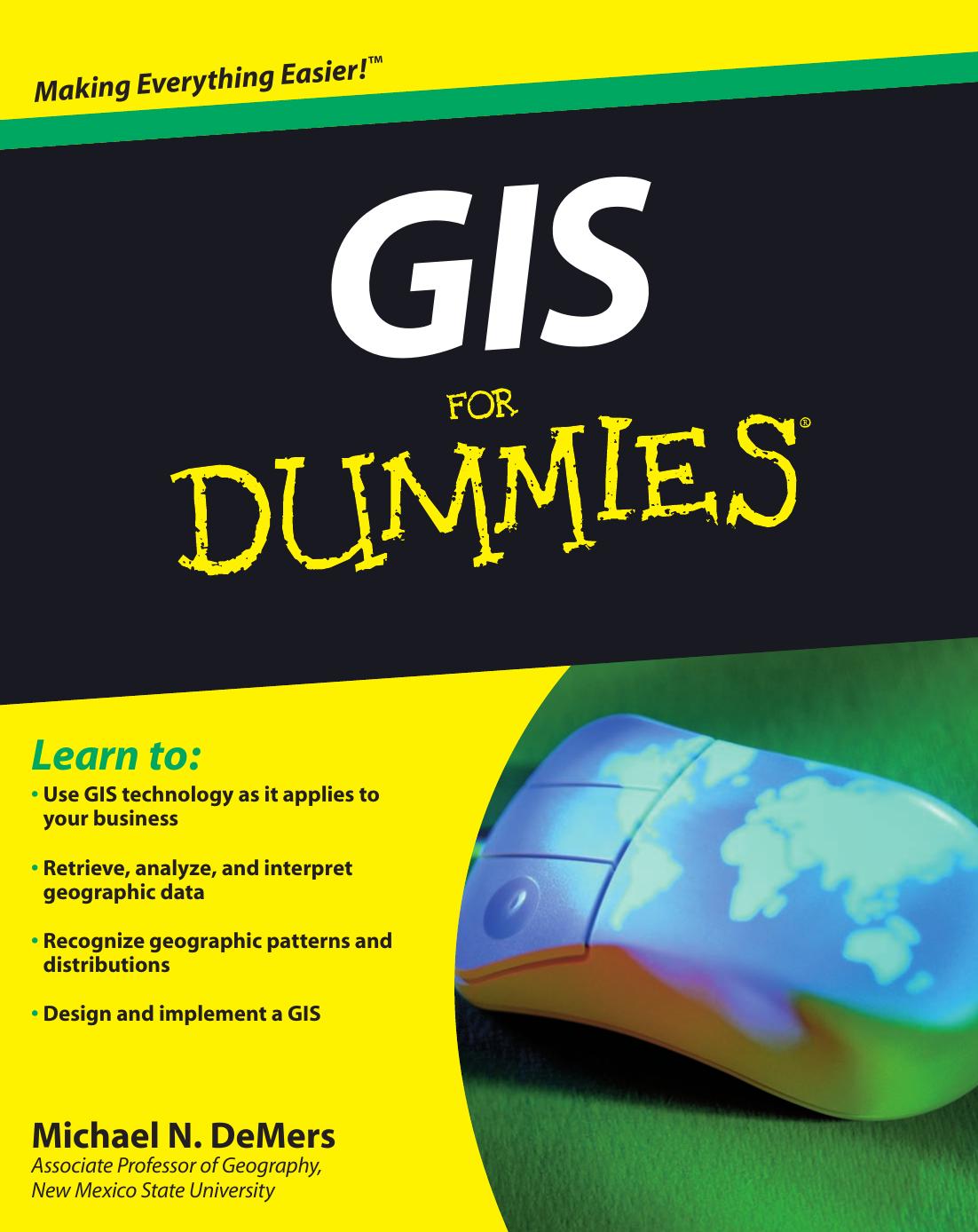GIS For Dummies by Michael N. DeMers

Author:Michael N. DeMers
Language: eng
Format: epub, pdf
Publisher: Wiley Publishing
Published: 2010-03-08T16:00:00+00:00
Chapter 11
Searching for Geographic Objects, Distributions, and Groups
In This Chapter
Knowing why you search for polygons
Searching the right polygons for your needs
Understanding the six methods for locating polygons
Turning found objects into groups
After you put geographic data into the computer, you use GIS frequently to get information derived from the data back out. To retrieve data that best suits your needs, you must know why, where, and how you search for geographic objects (such as roads, rivers, lakes, power plants, and thousands of others) and distributions represented by polygons (such as the range of an animal species or ethnic groups within a nation).
The vast majority of geographic objects that you encounter every day occur in groups. Some of these groups even have specific names. Birds occur in flocks, cattle in herds, trees in forests or orchards, quail in coveys, geese in gaggles, and the list goes on. Beyond the biological groups, glacial features (called drumlins) form in swarms, streets form networks, streams form watersheds, homes form neighborhoods, and many more. People assign special names to groups to provide a handy way to refer to features that look alike, act alike, occur in similar places, are near certain features, or occur in similar patterns or densities.
In this chapter, I show you how to specify search criteria that can yield the results you’re looking for. And after a brief look at common GIS interfaces, I explain the six methods for searching for polygons and why you might need to use each one. You can search for groups of objects by using the same GIS functions that you use to search for individual objects. Then, you can classify the whole group to suit your needs. This chapter shows you how to conduct a search for groups of objects, too.
Searching Polygons in a GIS
When GIS first came on the scene, resource specialists mainly used it to examine large portions of natural resources that were distributed over large areas of land. Similar data that spreads over large areas, represented by polygons (in vector GIS), are called a distribution. Distributions are still among the most important features in GIS. GIS can represent distributions of people, animals, disease, crime, land use, pollution, and more. To get the most from GIS, get familiar with distributions and use that information to make decisions. (See Chapter 3 for more about distributions.)
Whether polygons represent distributions of individual objects (such as people or animals) or area features (such as land parcels or forests), you can use many of their properties for later analysis. The data inside polygons can exist at any of the measurement scales, including nominal, ordinal, interval, ratio, or scalar. (I talk about measurement in Chapters 1 and 3.) You can look for objects based on thematic content, such as types of animals, houses, or trees. You can describe distributions based on size, orientation, perimeter, area, change over time, and many other factors.
Polygons are connected to each other, surround other things, and are surrounded by other things. They have a long list of spatial relationships that other objects don’t have.
Download
This site does not store any files on its server. We only index and link to content provided by other sites. Please contact the content providers to delete copyright contents if any and email us, we'll remove relevant links or contents immediately.
| Historic | Information Systems |
| Regional |
Man-made Catastrophes and Risk Information Concealment by Dmitry Chernov & Didier Sornette(4735)
The Revenge of Geography: What the Map Tells Us About Coming Conflicts and the Battle Against Fate by Kaplan Robert D(3597)
Zero Waste Home by Bea Johnson(3288)
COSMOS by Carl Sagan(2950)
In a Sunburned Country by Bill Bryson(2946)
Good by S. Walden(2914)
The Fate of Rome: Climate, Disease, and the End of an Empire (The Princeton History of the Ancient World) by Kyle Harper(2435)
Camino Island by John Grisham(2383)
A Wilder Time by William E. Glassley(2362)
Organic Mushroom Farming and Mycoremediation by Tradd Cotter(2306)
Human Dynamics Research in Smart and Connected Communities by Shih-Lung Shaw & Daniel Sui(2177)
The Ogre by Doug Scott(2114)
Energy Myths and Realities by Vaclav Smil(2059)
The Traveler's Gift by Andy Andrews(2010)
Inside the Middle East by Avi Melamed(1939)
Birds of New Guinea by Pratt Thane K.; Beehler Bruce M.; Anderton John C(1906)
Ultimate Navigation Manual by Lyle Brotherton(1767)
A History of Warfare by John Keegan(1713)
And the Band Played On by Randy Shilts(1615)
